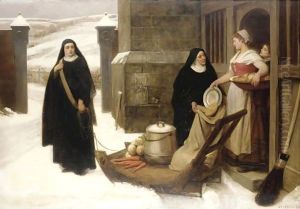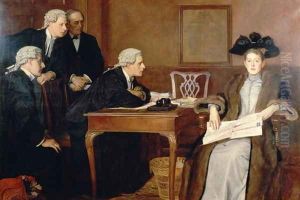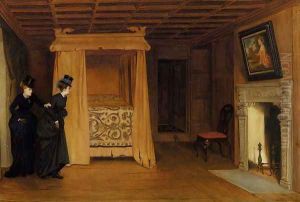William Frederick Yeames Paintings
William Frederick Yeames was a British painter, best known for his work in the genre of history painting. He was born in St. Petersburg, Russia, on December 18, 1835, to British parents. His father was a prosperous British consul in the city. Yeames was exposed to art and culture at a young age, due to his family's affluent background and his upbringing in a cosmopolitan environment.
Yeames received his initial artistic training in Russia, and after the death of his father, he moved to Britain with his family in 1848. In London, he continued his education in art and began to establish himself as a painter. He studied at Leigh's Academy and the Royal Academy Schools, where he developed his skills in drawing and painting.
In the 1860s, Yeames's work gained recognition, and he became associated with a group of artists known as the St. John's Wood Clique. This group of like-minded individuals often depicted historical and literary subjects with an emphasis on drama and elaborate detail. Yeames's most famous painting, 'And When Did You Last See Your Father?' (1878), is a perfect example of his historical genre work. It depicts a dramatic scene from the English Civil War where a young boy is interrogated by Roundheads about the whereabouts of his Royalist father.
Throughout his career, Yeames was an active member of the artistic community. He was elected as an associate of the Royal Academy in 1866 and later became a full Royal Academician in 1878. His work was widely exhibited at the Royal Academy and elsewhere, and he received commissions from various patrons.
Aside from history paintings, Yeames also produced portraits, landscapes, and illustrations. His style was characterized by a meticulous attention to detail and a commitment to historical accuracy, at least in terms of the settings and costumes of his subjects.
Yeames's influence extended beyond his paintings; he was a teacher and mentor to many young artists. He never married and lived a life devoted to his art. William Frederick Yeames died on April 3, 1918, in Teignmouth, Devon, England. His legacy includes a body of work that continues to be appreciated for its contribution to Victorian art and its historical narrative qualities.

















